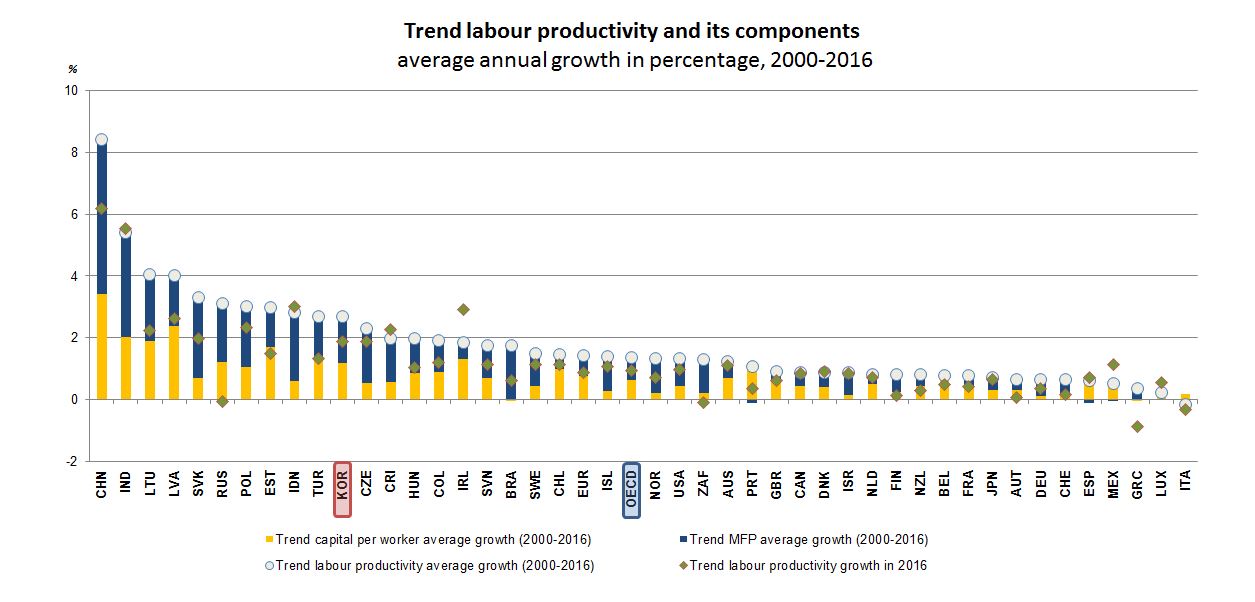Korea
 OECD recommendations
OECD recommendations
Korea’s labour productivity growth was the fastest in the OECD during the past 25 years, but productivity is weak in services. Product market regulation is among the most stringent in the OECD area.
- Expand “cost-in, cost-out” system of regulatory reform to reduce the regulatory burden.
- Phase out entry barriers for large firms from business lines reserved for SMEs.
- Relax barriers to trade and investment and improve the business climate to help firms better connect to global innovation networks.
- Strengthen R&D links between academia, business and government by promoting the mobility of researchers.
- Break down labour market dualism and increase inclusion by relaxing employment protection for regular workers and expanding social insurance coverage and training for non-regular workers.
- Further expand the number of Meister vocational schools, which increased from 21 in 2010 to 48 in March 2017, and implement the Industry-Academic Integrated Apprenticeship School Programme to enhance links between schools and firms.. Expand education for older persons with low skills.
- Facilitate early-stage IPOs and take further steps to jumpstart the M&A market through regulatory reform.
- Further reduce barriers to agricultural imports and scale back the high level of support.
 Data
Data
Source: OECD May 2017 Economic Outlook database
 Key publications
Key publications
Jones, R. and J. Lee (2016), “Raising Korea’s Productivity through Innovation and Structural Reform”, OECD Economics Department Working Papers, forthcoming.
Chang, W., Y. Yang and S. Woo (2016), “Is Korea's Public Funding for SMEs Achieving Its Intended Goals?", Korea Development Institute (KDI), No. 63.
 Productivity - enhancing institutions
Productivity - enhancing institutions
Korea Productivity Centre (KPC)
KPC is a public institution founded in August 1957. It has promoted productivity growth through research, training, consulting, surveys, and qualification certification. In addition, it has programmes to increase productivity in other countries in the Asia-Pacific Region.
Regulatory Reform Committee (RRC)
The RRC was established under the President in 1998 to promote regulatory reform, in part by evaluating existing and proposed regulations. Its goal is to reform regulations that weaken Korean’s competitiveness. The In addition, it registers regulations, gathers opinion on regulatory reform. The Committee is composed of 22 members including the Prime Minister (the chairman), a chairman from the private sector, 14 private-sector members, and six government ministers.
Related Documents


